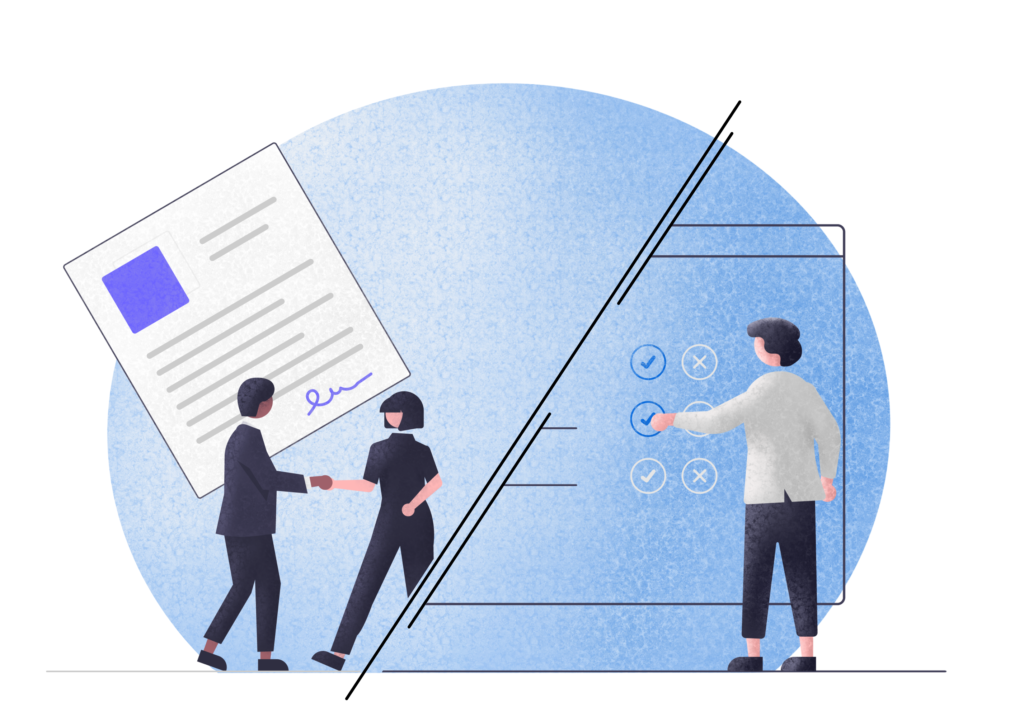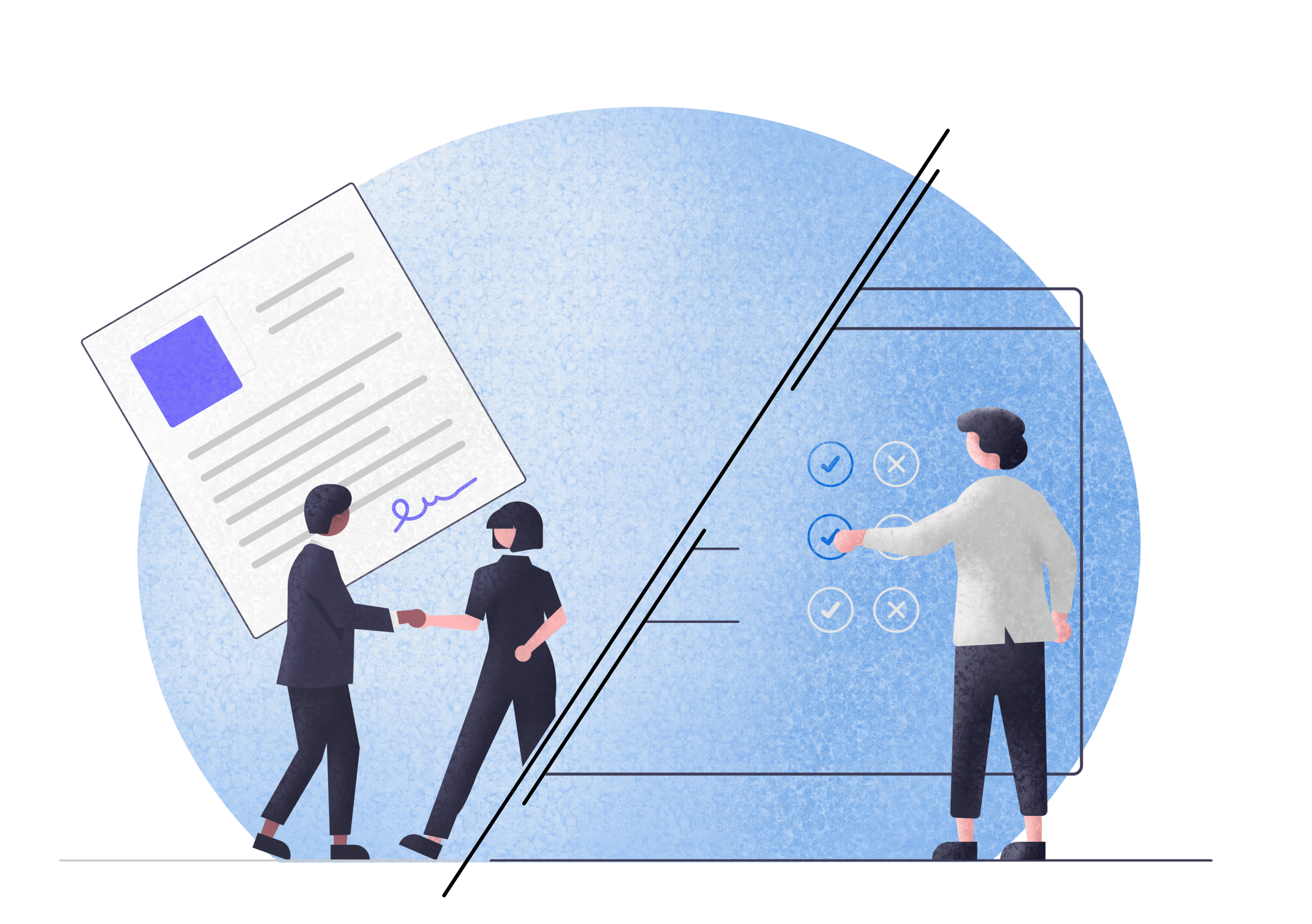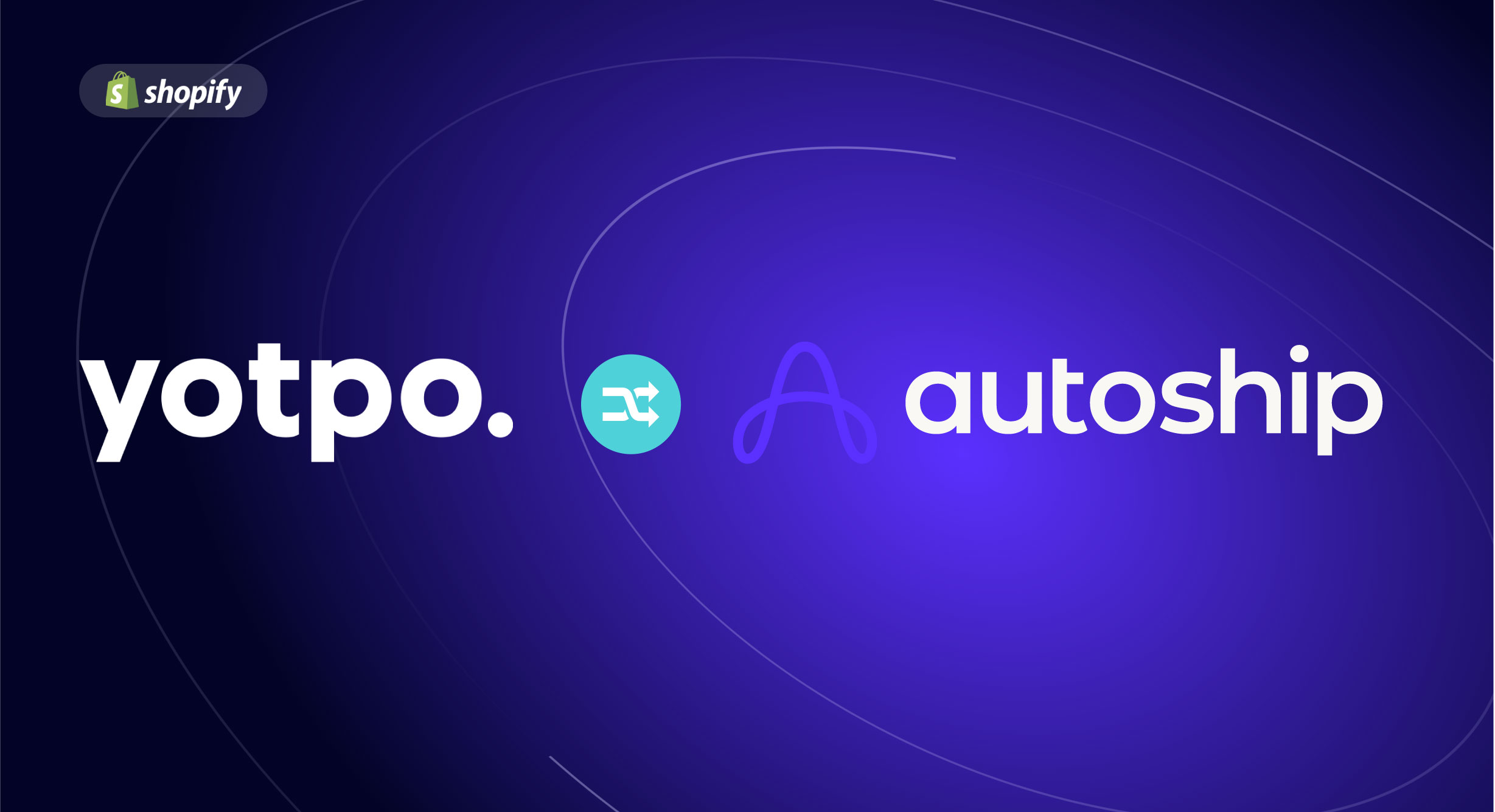Humans are creatures of habit, and that quite often works against us rather than in our favor.
Take purchase orders, for instance. Businesses have been ordering products and supplies from manufacturers the same way for a long time. But just because it’s been done that way for a hundred years or more doesn’t mean that it shouldn’t—or can’t—change. After all, nearly every other purchasing model has indeed been flipped on its head.
The advent of B2C ecommerce has opened up new methods of moving products from sellers to customers, and a lot of professionals are wondering if these new systems will inevitably overtake old B2B purchase order systems. In fact, some professionals have staked their entire career on them.
“Why wouldn’t you capitalize on this opportunity and streamline operations and reduce costs at the same time by implementing end-to-end B2B eCommerce capabilities?” says Jason Greenwood, founder of Greenwood Consulting.
Greenwood’s consultancy specializes in helping B2B and DTC sellers graduate to ecommerce systems. It’s a sector of the business landscape he feels has been overlooked, with these sellers getting “short shrift” from the vast majority of ecommerce consultants. And that lack of attention has only reinforced the fears that these sellers have had about the technology:
What if there’s no way to reconcile the needs of B2B sellers with the tools currently being used to sell to consumers? Is there actually any way to marry the two?
There might be, but only if ecommerce platforms can adapt their systems—and older, established businesses make some adjustments to their processes to adopt those systems.

POs, Old Systems, and the Appeal of B2C Ecommerce Platforms
The Humble PO
We’ll give credit where credit’s due; purchase orders have served their purpose well for at least a hundred years. Long before the first iPhone was even a twinkle in Mr. Jobs’ eye, businesses needed a system that allowed them to request, track, and make exchanges. The trusty PO took to the responsibility like an overeager intern, bringing order to…well, orders:
- They created paper trails that facilitated auditing
- They coordinated the fulfillment of complicated requests
- They established relationships and expectations that could be enforced via legal recourse
And that was just the beginning.
But much like any tool, after years and decades of use, they started to show their age (especially once more efficient tools were created). Now, they constitute the foundation of a slow, outdated system—one that requires a lot of paperwork and a lot of direct human contact, and one that is difficult to automate.
The New Cart on the Block
Ecommerce, on the other hand, is incredibly quick and brutally simple:
- Customers choose the products they want
- They purchase them
- They wait for their delivery
It’s hard not to love a system that lets you pick what you want in under five minutes, and have the product arrive in as few as two days. Really, businesses like Amazon have succeeded by catering to our innate laziness—the only point in the process where we have to leave the couch is when we open the door to grab the packages off of our doorstep.
Here’s the thing: the vast majority of us aren’t using all that extra time and energy we’re saving to do anything productive. We’re still sitting on the couch, we’re marathoning a show on our streaming service of choice. If we were getting that kind of productivity during work hours, though….
Teaching an Old Purchase Order New Tricks
Adapting ecommerce platforms to B2B purchasing systems would save professionals a considerable amount of time, would save quite a few trees, and would potentially cut down on the complexity of the current purchasing system. More importantly, we’re having an increasingly difficult time trying to imagine doing business any other way.
“B2B buyers are also B2C buyers outside their day jobs,” says Greenwood, “And they now have exactly the same eCommerce experience expectations in their day job as a result.”
Sure, technology-facilitated convenience is something we all want in our lives. But we do have to remember that tech doesn’t always make things easier. It’s hard to laud the benefits of computer technologies when we still can’t seem to build a printer that works right without resetting it five times and offering a prayer to the gods.
So we have to admit that there are significant obstacles to getting from point A to point B, and we’ll have to jump those hurdles to finally get what we want out of ecommerce solutions.
The B2B Ecommerce Complications
Purchase orders, and the process that uses them, do a number of things that are critical for B2B sales, and that ecommerce solutions will have to replicate in order to facilitate B2B making the jump across the digital chasm. Here’s a truncated list of what POs make it possible to do:
- Make a single purchase with multiple payment methods and multiple delivery destinations
- Create a binding legal agreement between the seller and the customer that can be enforced on either end should one side fail to comply
- Grant the purchaser access to the selling agent’s vast product experience, helping them to find the appropriate products for the purchaser’s use case
- Allow for custom prices based on the previous agreement between the purchasing agent and the selling agent
- Make it easy to get order or delivery status so an order can be closed out
- Create an easily audited paper trail with a single source of truth
- Facilitate recurring orders
- Facilitate very large purchases of tens of thousands of dollars or more
In other words, most B2B procurement is a customized experience, while most ecommerce experiences are identical to each other (and typically happen on a much smaller scale).
How Merchant Technology Can Answer B2B Demands
That’s not to say that current technology can’t answer many of those demands, or that tech couldn’t be easily adapted to address them:
- Some current ecommerce platforms already allow for multiple delivery destinations
- A scheduled order solution can make subscriptions or recurring shipments as easy as clicking a button
- Bespoke product recommendations can be a factory-installed (pun intended) part of the purchasing process (see some of the amazing things Herbsmith is doing)
- With a little adjustment, the current ecommerce systems for tracking order and delivery status could be used to trigger automated push notifications (either via email, as text, or via an app)
- Some scheduled order platforms already allow for custom pricing, as well as scaling discounts that reward long-term purchasing relationships
In other words, a lot of the technology is not only possible, it’s already in use.
How Ecommerce Software May Have to Adapt
Still, there’s some room for improvement, or at the very least, some round holes that need to be shaped to fit square pegs.
Multiple Payment Sources
First and foremost is multiple payment sources. Savvy online shoppers will be quick to comment that most B2C ecommerce platforms don’t offer this functionality, as it’s not as common a need among consumers as it is among businesses. That said, it’s indeed possible, it’s just typically omitted to keep the process as simple as possible.
Even in the event that a major overhaul of the code is required to enable multiple payment sources, in the interim merely dividing the order into multiple transactions is a functional stopgap that requires minimal effort or time to use.
At the end of the day, however, merchants want to be able to purchase using invoices as well as credit cards, and that’s not a common occurrence in B2C transactions.
EDI
Electronic Data Transfer (EDI) is another key feature of modern PO systems that ecommerce solutions usually lack. Businesses use EDI to trade PO data around so that everyone can maintain accurate books. B2C ecommerce transactions don’t require this, but if there’s any intent to keep our auditors sane, they’ll have to adopt the feature for B2B sales.
But if ecommerce-to-marketing automation integration is any indicator, automating the export of customer and order data via API to the purchaser’s system should be pretty straightforward.
MOQ
While Toyota may have discovered the economy of small batches with lean manufacturing, a lot of manufacturers still operate using economies of scale. As a result, Minimum Order Quantities (MOQs) are a mainstay of the purchase order process. Manufacturers require orders to be above a certain threshold to ensure profitability, a problem that B2C ecommerce doesn’t have.
Any ecommerce solution that desires wide B2B adoption would have to facilitate restrictions on order quantities, both high and low, for profitability and to manage supply and demand. And in fact, some ecommerce tools already do.
Digital Sales Enablement
Similar to the bullet point mentioned above about product recommendations, there would need to be a system that allows buyers to make requests and ask questions, and allows the seller to respond. Requesting quotes, making offers, debating prices; those are interactions that usually happen either in person, or over the phone (or, barring that, via email).
If we want the system to be self-contained and self-supporting, we’d need that functionality included in the tool itself. To be fair, though, messaging platforms have been around for almost three decades, so that’s less an obstacle and more a minor addition to the devs’ scrum board.
Large Purchases
Ok, sure; large corporations may be dropping $20k on paper for their annual paper airplane competition, and that’s a tad bit larger than your average Amazon shopping spree. But it’s not like we aren’t processing similarly large purchases via card in other areas and via different means. Not everything has to happen by check or wire transfer anymore.
After all, if we can buy real houses with Bitcoin, or sell virtual ones for over half a million, there shouldn’t be any problem with making comparatively large purchases for B2B ecommerce.
Furthermore, making a large purchase through a cart could still be powered by an automated email follow-up with an invoice. Simplify the purchase while keeping the finance people happy.
Contract Obligations
One area that presents a unique problem is the legally binding nature of purchase orders. Many businesses have had to fall back on those obligations when either the manufacturer didn’t deliver (or didn’t deliver on time), or the purchaser didn’t pay up (or didn’t pay on time).
Then again, nearly every B2C ecommerce seller offers guarantees, warranties, and/or return policies, and the transactions are effectively instantaneous (and don’t process if the funds aren’t available). And signing legal documents as part of setting up an account for an online portal is so old hat that none of us read the fine print anymore (if we ever did in the first place).
So that might be a problem that’s so easy to solve that we’ve already solved it.
Scheduling
The nice part about ordering with a PO is that you can determine when you want to get everything. You may buy supplies for the next 3 months all at once, but you don’t actually want those supples all at the same time.
This isn’t really done in typical B2C ecommerce, since 99% of consumers want the product right when they order it (thank you, Amazon, for making that possible). But with many B2B relationships, the buyer wants to schedule when they actually get it.
How B2B Buying May Have to Adapt
Ok, we’ve taken a look at what’s possible for the technology, and what might need adjusting to make the tools work. But what about the organizations that would use them? How much would need to change in policy and procedures for those tools to be of any use?
Corporations, conglomerates, and other large, veteran organizations are used to doing things the same way for a very long time (“humans have habits,” and all that). And there are some positions (in some cases, even whole departments) that depend on processes continuing to exist the way they have in the past.
The simplicity of a true B2B ecommerce solution may, when applied across the entire process, eliminate the need for certain positions. At the very least, it would require a significant adjustment for those professionals as they look for other ways to add value to the process.
Additionally, these changes might shift the purchasing responsibility to different professionals entirely—most likely the managers and supervisors of the teams that would be putting the products and supplies to use. With the process now happening in just a few clicks, it may make more sense to put the authority to make purchases in the hands of those that need the purchase.
Then again, there will likely still need to be someone to sign off on those purchases, and foremen and team leads may not be keen on taking the lead with negotiating terms with the seller via chat. It may also make sense to limit the number of employees that have authorized login credentials for seller stores.
Bottom line, some dynamics would have to change, some job descriptions would need to be rewritten, and some processes would have to be overhauled.
The More Things Change…
Some processes may not even have to change, or will be simplified so completely as to remove the task entirely.
For instance, inputting additions to inventory is already at least a partially manual process. But if ecommerce platforms adopt EDI standardization and combine it with push notifications, we may wind up with a system where our inventory management system knows we got the delivery before we do.
In a similar vein, some businesses are already using ecommerce this way as buyers. Newer businesses, startups, etc. are often quick to look to ecommerce storefronts and slow to make direct-to-seller relationships. Why not? Smaller businesses have company credit cards more frequently than they have lines of credit, so a digital cart makes more sense than a PO.
In other words, it may be that the change is already upon us, and the choice is either to adopt or go the way of Blockbuster.
Conclusion
As with every emerging technology, there are bound to be some growing pains. But at Autoship Cloud, we believe that the B2B purchasing system can be improved with technology. When it comes to many of the pains associated above, Autoship Cloud can simplify wholesale and B2B purchases. Make it possible to take different payment types and schedule orders for the future.
In the end, what can’t be denied is the fact that since everyone’s used to the simplicity and ease of ecommerce in their personal lives, we’re all becoming increasingly impatient when those same expectations aren’t met in other areas. And as Jason Greenwood put it, “If you don’t meet those expectations then they’ll [the purchaser] most likely find someone else that will.”


